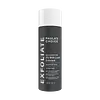What's inside
What's inside
 Key Ingredients
Key Ingredients

 Benefits
Benefits

 Concerns
Concerns

 Ingredients Side-by-side
Ingredients Side-by-side

Water
Skin ConditioningButylene Glycol
HumectantBacillus Ferment
Skin ConditioningNiacinamide
Smoothing1,2-Hexanediol
Skin ConditioningLactobacillus/Punica Granatum Fruit Ferment Extract
Skin ConditioningFicus Carica Fruit Extract
HumectantCitrus Unshiu Peel Extract
MaskingPolyglutamic Acid
Skin ConditioningSalicylic Acid
MaskingCapryloyl Salicylic Acid
ExfoliatingGlycerin
HumectantPropanediol
SolventCitric Acid
BufferingSodium Citrate
BufferingHydroxyethylcellulose
Emulsion StabilisingSodium Polyacrylate
AbsorbentGluconolactone
Skin ConditioningSodium Phytate
Water, Butylene Glycol, Bacillus Ferment, Niacinamide, 1,2-Hexanediol, Lactobacillus/Punica Granatum Fruit Ferment Extract, Ficus Carica Fruit Extract, Citrus Unshiu Peel Extract, Polyglutamic Acid, Salicylic Acid, Capryloyl Salicylic Acid, Glycerin, Propanediol, Citric Acid, Sodium Citrate, Hydroxyethylcellulose, Sodium Polyacrylate, Gluconolactone, Sodium Phytate
 Reviews
Reviews

Ingredients Explained
These ingredients are found in both products.
Ingredients higher up in an ingredient list are typically present in a larger amount.
Butylene Glycol (or BG) is used within cosmetic products for a few different reasons:
Overall, Butylene Glycol is a safe and well-rounded ingredient that works well with other ingredients.
Though this ingredient works well with most skin types, some people with sensitive skin may experience a reaction such as allergic rashes, closed comedones, or itchiness.
Learn more about Butylene GlycolSalicylic Acid (also known as beta hydroxy acid or BHA) is a well-known ingredient for treating skin that struggles with acne and clogged pores. It exfoliates both the skin's surface and deep within the pores to help clear out buildup, control oil, and reduce inflammation.
Unlike AHAs (alpha hydroxy acids), salicylic acid is oil-soluble. This allows it to penetrate into pores which makes it especially effective for treating blackheads and preventing future breakouts.
Salicylic acid is also known for its soothing properties. It has a similar structure to aspirin and can calm inflamed or irritated skin, making it a good option for acne-prone skin that is also sensitive.
Concentrations of 0.5-2% are recognized by the U.S. FDA as an over-the-counter topical acne product.
It can cause irritation and/or dryness if one's skin already has a compromised moisture barrier, so it's best to focus on repairing that before introducing this ingredient into your routine.
While salicylic acid does not increase sun sensitivity, it’s still important to wear sunscreen daily to protect your skin.
If you are looking for the ingredient called BHA or Butylated Hydroxyanisole, click here.
Learn more about Salicylic AcidWater. It's the most common cosmetic ingredient of all. You'll usually see it at the top of ingredient lists, meaning that it makes up the largest part of the product.
So why is it so popular? Water most often acts as a solvent - this means that it helps dissolve other ingredients into the formulation.
You'll also recognize water as that liquid we all need to stay alive. If you see this, drink a glass of water. Stay hydrated!
Learn more about Water